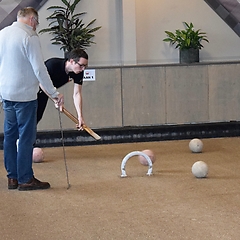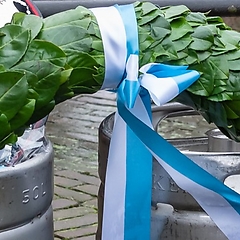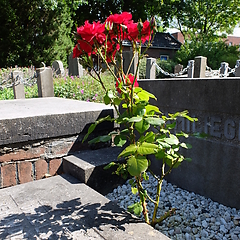Flag throwing is swinging a colourful flag of about 80 x 80 inch, in an artistic and elegant manner. The flag is attached to an eight feet long pole. The lower part of the pole has a counterweight, a ball, to acquire a favourable balance point. A series of turns are performed, on music or drum rolls. Elegance in the movements is important. The patterns must, as it were, flow into each other. Flag throwing consists of three rounds. In the first round the flag thrower is encouraged. The flag is thrown above the head, to give courage. Subsequently the flag is turned around the neck, the loins and the knees, to indicate that one should even be prepared to give one’s body, one’s life. The second round symbolises the fight against evil. The flag is, among other things, directed at heaven, at God. Some low to the ground turns are made, the flag thrower steps over the flag and throws it high up in the air because the enemy is trying to seize the flag. In the third round one reaches victory over evil by prayer. Finally the flag can be thrown up high as the sign of victory.



